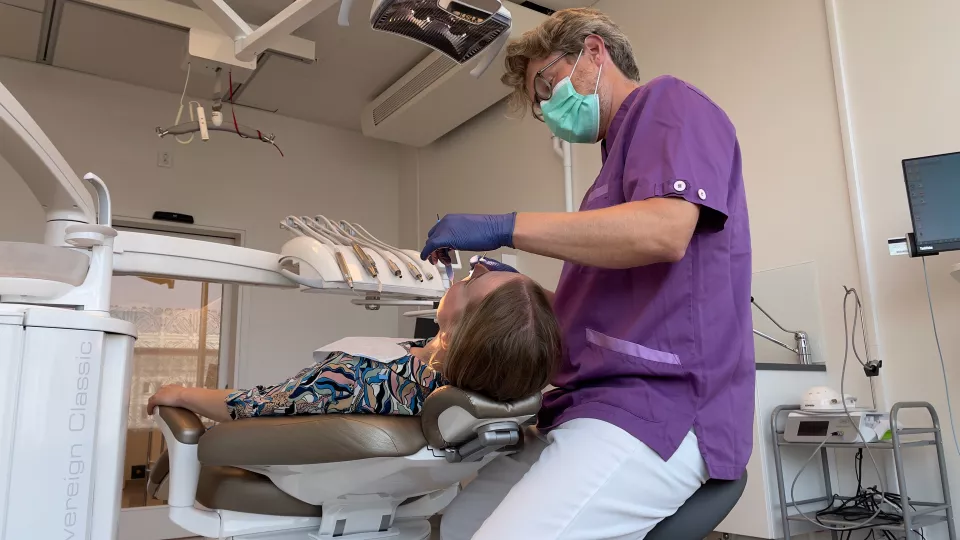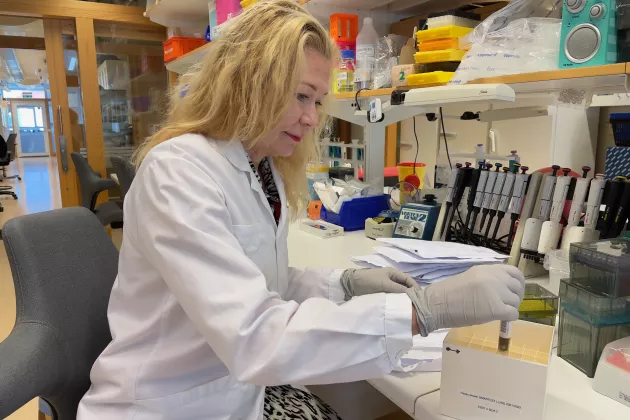In atherosclerosis, fat and calcium have accumulated in the artery walls over time, forming so called atherosclerotic plaques. Such plaques restrict the blood flow, which can lead to heart attack and stroke. Researchers need to understand more about the causes of atherosclerosis to develop preventive treatments, and a new large-scale study has discovered links between atherosclerosis and gut and mouth bacteria.
In the study, published in the scientific journal Circulation, researchers found links between 64 bacterial species in the gut and early signs of atherosclerosis, so called subclinical atherosclerosis. Two of these bacteria had a particularly strong link to early atherosclerotic plaques. These were two types of streptococci, which are common in the mouth.
“Our study shows that there are links between certain bacteria in the gut and atherosclerotic plaques. Individuals who had more atherosclerotic plaques in the coronary arteries also had more of certain oral bacteria in their gut. We need to investigate whether these bacteria contribute to atherosclerosis in the coronary arteries”, says Marju Orho-Melander, professor of genetic epidemiology at Lund University Diabetes Centre (LUDC) and one of the lead authors of the study.
Bacteria and atherosclerosis
The study is based on analyses of stool samples and images of the heart from 8,973 individuals without diagnosed heart disease in Malmö and Uppsala, who are participants of the SCAPIS study (the Swedish CArdioPulmonary bioImage Study). About 40 percent of the participants had so called subclinical atherosclerosis, which allowed the researchers to study links between bacteria in the gut and atherosclerosis. The study is the result of a close collaboration between Marju Orho-Melander's research group at Lund University and professor Tove Fall's research group at Uppsala University.
“We know a lot about how genetic and life-style factors affect the risk of developing atherosclerosis and other cardiovascular diseases. We don’t know as much about how bacteria in the gut and mouth affect the risk of cardiovascular disease and we are breaking new ground with our research in this field”, says Tove Fall, professor of molecular epidemiology at Uppsala University and corresponding author of the study.
Studies of oral health
Five fecal bacterial species associated with early signs of atherosclerosis in the SCAPIS study were linked to poor oral health. This was investigated using stool samples from the Malmö Offspring Study (MOS) and saliva samples from the Malmö Offspring Dental Study (MODS). Daniel Jönsson, principal investigator of MODS, has collected the saliva samples and conducted dental health examinations on several of the participants in connection with their visit to the Faculty of Odontology at Malmö University.
“We saw that five bacterial species linked to atherosclerotic plaques were more common in the saliva if they were also present in the gut. These species are linked to, among other things, caries, and bleeding gums. Overall, our results suggest that the presence of certain oral bacteria in the gut may reinforce the atherosclerosis process. In future studies, we want to investigate the role of dental health and oral flora in the development of cardiovascular diseases”, says Daniel Jönsson, associate professor of periodontology and internal medicine research at Lund University.
Preventive treatments
A long-term goal of the research is to identify bacteria that can be used as targets for new treatments that can prevent atherosclerosis. Researchers need to conduct new studies where they follow individuals over time to draw firm conclusions about causality.
“Long-term, we hope to identify bacteria that can affect the risk of atherosclerosis. One group that may benefit from this type of research is people with type 2 diabetes, who are at risk of developing atherosclerosis. If it turns out that certain bacteria in the mouth and gut are significant for the development of this condition, we can try to regulate the levels of these so that they are less likely to survive in the mouth and multiply to the gut”, says Marju Orho-Melander.
Link to the press release from Uppsala University (mynewsdesk.com)



